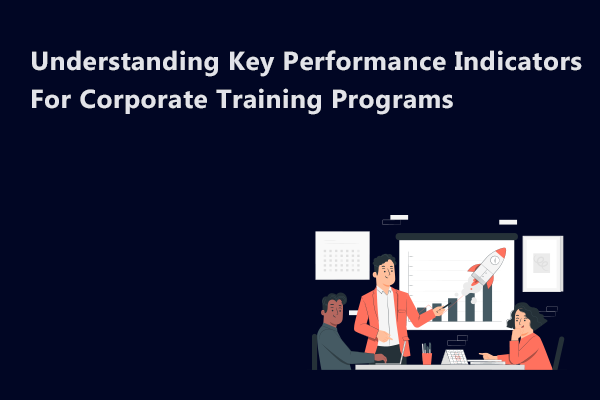
Understanding Key Performance Indicators For Corporate Training Programs
Whether you’re beginning with basic corporate training programs or have an advanced program in place, understanding the key performance indicators is crucial for the growth and success of your organization. The motive of the KPIs is to give you an insight into the desired outcomes and return on investment your training program is offering.
In this blog, we will discuss the meaning of key performance indicators and how understanding them can add value to the corporate training courses you have adopted for your organization.
Meaning of Key Performance Indicators for Corporate Training Programs
KPI is a performance measurement type that helps you comprehend how your department or organization is performing. An efficient KPI should serve as a compass guiding you and your team in the right direction to achieve your strategic goals. Therefore, if you do not conduct a KPI analysis you do not understand whether the corporate training courses are driving a positive ROI. If you do not have KPIs, it is time to implement them into the system.
However, when your training program grows you need to implement more KPIs for indicating how the corporate training programs are influencing overall business performance. Tracking a KPI may be challenging. But, with the right technology and a streamlined learning management system it is possible to track progress and measure valuable results.
7 KPIs Needed To Measure Training Program Effectiveness
KPIs include several parameters such as the number of individuals trained, cost per individual, pass percentages, and the number of hours invested in training. However, such KPIs are simple and fail to provide all the valuable information needed to assess the effectiveness of a training program. Therefore, training KPIs should focus on major business goals to keep up with the changing times and technology. Here are 7 prime KPIs you need to measure training success effectively:
- Time To Proficiency: This factor is crucial to measure training effectiveness. We are all aware of the popular proverb that slow and steady wins the race. However, in the fast-paced corporate world, fast learners producing results sooner receive more recognition. A learning management system makes learning engaging by shortening the learning curve. You can use the reporting capabilities of an LMS to track the average time taken by learners to complete corporate training programs. You can also create focus groups to assess the proficiency level before and after training to analyze the impact of training on performance enhancement.
- Knowledge Retention: Forgetfulness is one of the greatest hurdles to learning. To overcome this, we need to build a training program that makes learning more engaging through short video lessons using illustrations and animation and repeating them across regular time intervals. How much information the candidates can retain is a key indicator of how effective the training program was. It is measured by analyzing the difference between before and after training using short assessments.
- Transferring Training: The basic purpose of corporate training courses is to equip employees with the required knowledge & skills and enable them to apply those in daily tasks. Aligning learning with the desired performance of the employees is vital for organizational alignment as a whole. Hands-on training, digital learning, progress tracking, and observation are needed to assess whether employees can translate the learned information to their jobs. This KPI when implemented with learning analytics can identify the knowledge gaps that are hindering the knowledge transfer process.
- Impact On Performance Metrics: The sole purpose of training is to enhance individual performance and organizational productivity. Corporate training programs enable businesses to increase their selling efficiencies, productivity, and compliance. Comparing the difference in performance metrics before and after training is the key to understanding the value of this KPI to increase ROI.
- Employee Engagement: Today’s job market is highly transparent and competitive and gives employees the power to negotiate a better offer. Thus, analytical tools to assess employee satisfaction, dedication, and confidence are necessary to reduce the attrition rate and get the job done. Corporate training courses are crucial for enhancing employee engagement, improving retention, and reducing turnover. Therefore, employee experience as a KPI within corporate training cannot be neglected.
- Net Promoter Score: Customer satisfaction is becoming significant for successful businesses because their reviews and feedback can make or break your organization. Like, the net promoter score allows customers to rate on a scale of 1-10, similarly, a feedback system can be added for a training course so employees can rate them based on their learning experience. This will help you to judge the effectiveness of your training program.
- Stakeholder Satisfaction: Training programs use analytics that involves data mining and crunching to present you with quantifiable data. However, quantitative data cannot always provide solutions to every problem. Getting qualitative feedback from stakeholders based on real-time experience is a vital KPI to analyze training effectiveness.
Conclusion
Thus, corporate training programs add value by improving the performance of the employees. The above KPIs will provide results and incorporate an efficient evaluation process needed to track the performance metrics and measure productivity levels. To know more about our corporate training courses, visit our website www.learnow.live.
